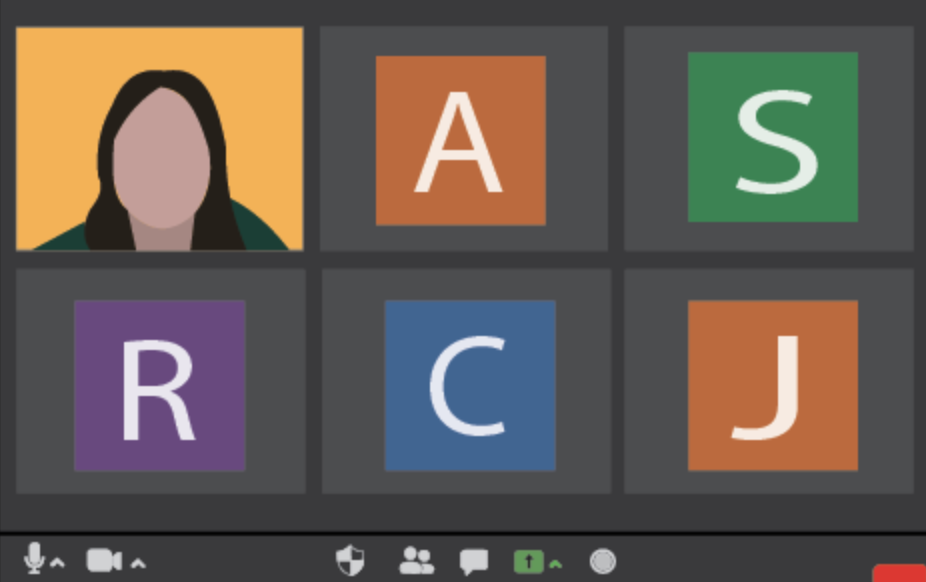As soon sophomore Emily Lu is dismissed from her sixth period English 10 class, she has just a minute or two as a break before clicking on the link to her next commitment: the Economics Club.
In August, clubs began to convene online for the first time. The transition from in-person meetings to a virtual format has proven more difficult for some clubs than others.
Senior Shannon Ji, the National Honors Society (NHS) co-president said that a major difference between NHS meetings this year compared to last year lies in the detachment that stems from the Zoom format.
“Around 80 percent of people have their cameras shut off during the meeting,” Ji said. “This significantly affects the connections between members of the club, especially with the freshmen, who I’ve never seen in person at school.”
By keeping their camera off, it is easier for students to be disengaged from the events of the meeting, she said. Participants who leave their cameras off tend not to participate in discussions or club activities, which limits a meeting’s productivity and sense of community.
Freshman Taylor Chu said that many students see turning on their cameras during club meetings as optional because clubs are less formal than classes.
Lu, a member of both the Science Olympiad and Robotics clubs, points out that turning the camera on can be intimidating.
“It’s awkward when no one else is turning on their camera, and you don’t want to be the only one,” Lu said. “Plus, when people don’t turn their cameras on, I know less about them, which can make the meeting uncomfortable.”
For Lu, the lack of faces in the Zoom meetings does not create the strong sense of community that in-person club meetings have.
UNICEF president Aileen Liao, a senior, said she understands why club participants are hesitant to turn on their video screens.
Since not all of the club members have had a chance to meet each other in real life, it is natural that they feel shy.
Many clubs on campus are discussion-based, and typically present a current event or idea and ask members to exchange their thoughts regarding that topic. While these clubs run similarly to last year, service clubs like UNICEF and NHS find it more challenging to work remotely.
“As a service club, it’s hard to plan volunteering events during a pandemic,” Ji said.
Many service activities that would normally take place in-person have been postponed or canceled altogether. NHS had previously planned to volunteer at a local senior center, but the COVID-19 pandemic made that impossible.
As clubs adapt to meetings over Zoom, many have found creative ways to increase participation.
NHS has held discussions and workshops on how to continue to develop service projects while maintaining safe practices. Many members have suggested hosting virtual workshops for younger students and product drives for people in need.
“I think that these discussions help them feel more comfortable and feel that they have a say in the club,” Ji said.
Another method to boost participation is creating activities that capitalize on the virtual environment.
“We actively incorporate new activities like Kahoot!, videos, discussions, and ‘quizzes’ into each meeting to engage everyone,” Liao said.
Chu finds that games like trivia, Kahoot! and skribble.io have helped encourage students new to a club to participate. Chu also said offering a prize incentivizes club members to join in on the activities.
Lu agreed that holding these fun, interactive activities helps participants feel more comfortable within the club.
“In Science Olympiad, we play team bonding games like Mafia in between taking tests and correcting them,” Lu said. “It’s like a break, and it gives use something to look forward to.”
At the end of the day, many club officers hope their meetings serve as an opportunity for students to connect with each other.
“While it may be harder to feel connected in a virtual format, my officers and I try to create a welcoming environment for students who may have never really experienced the campus,” Liao said.
























